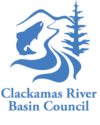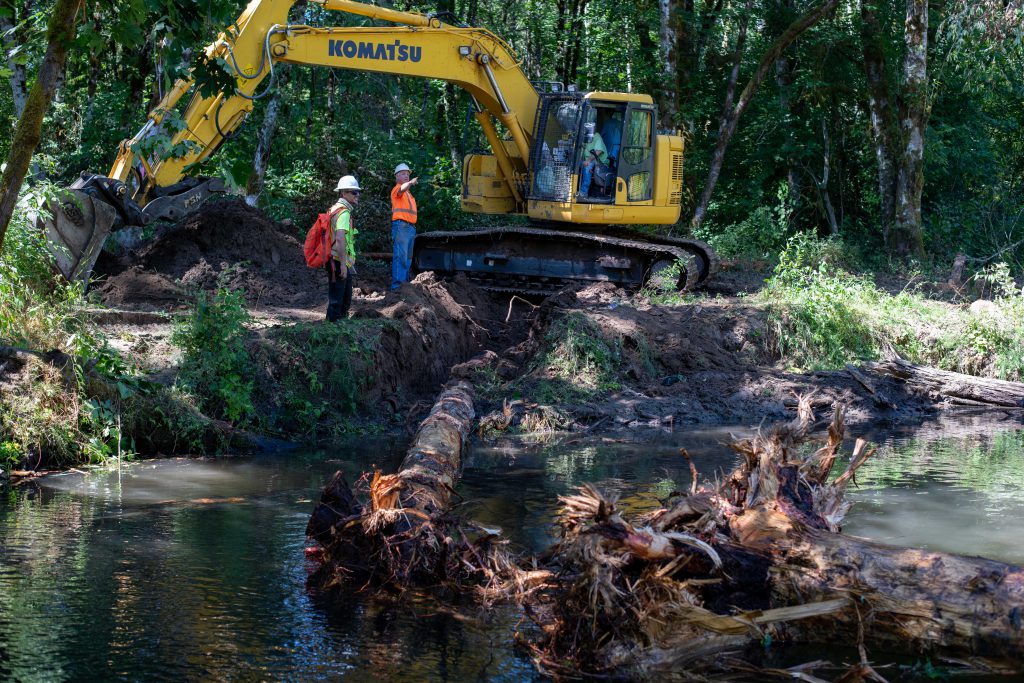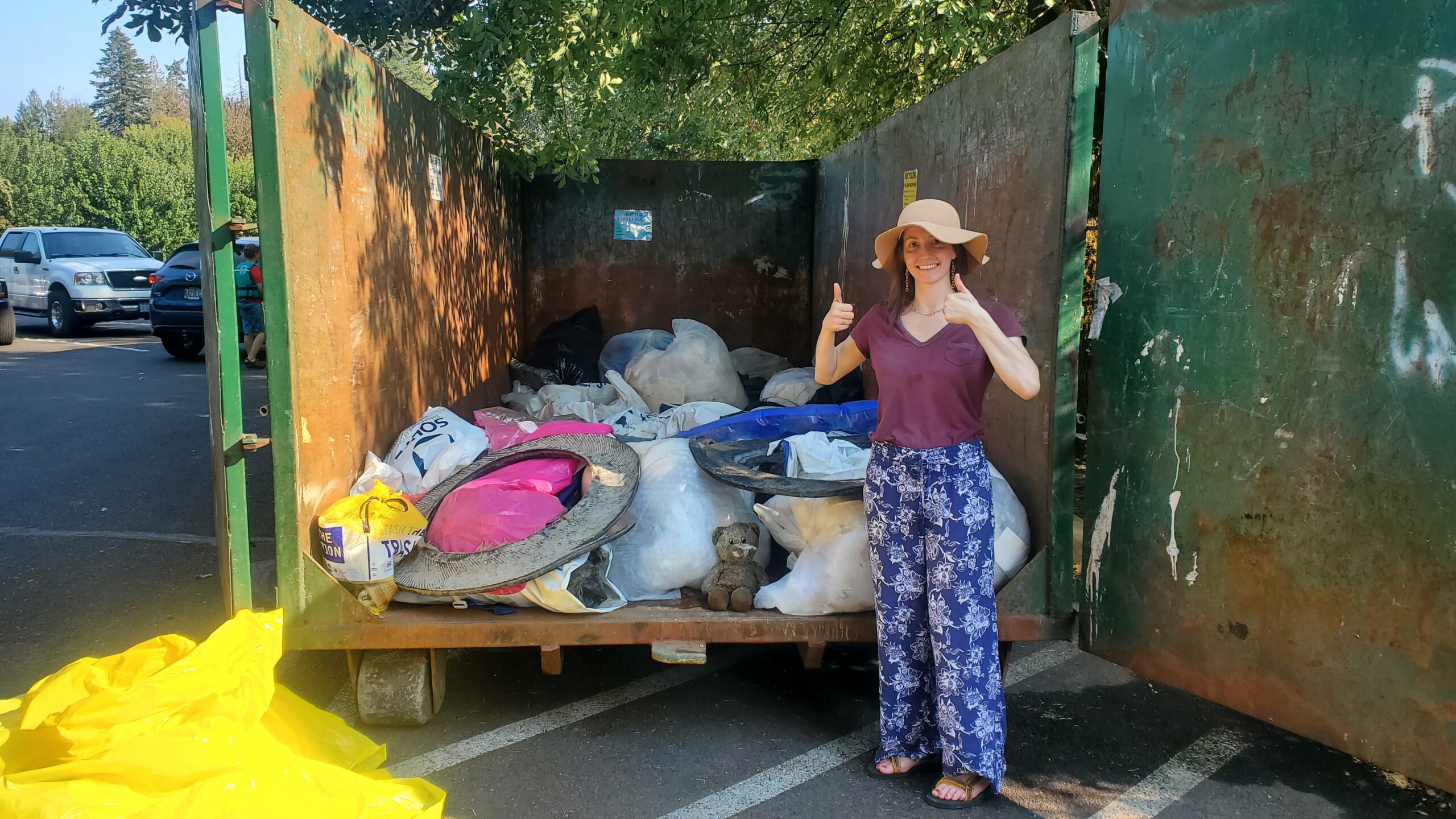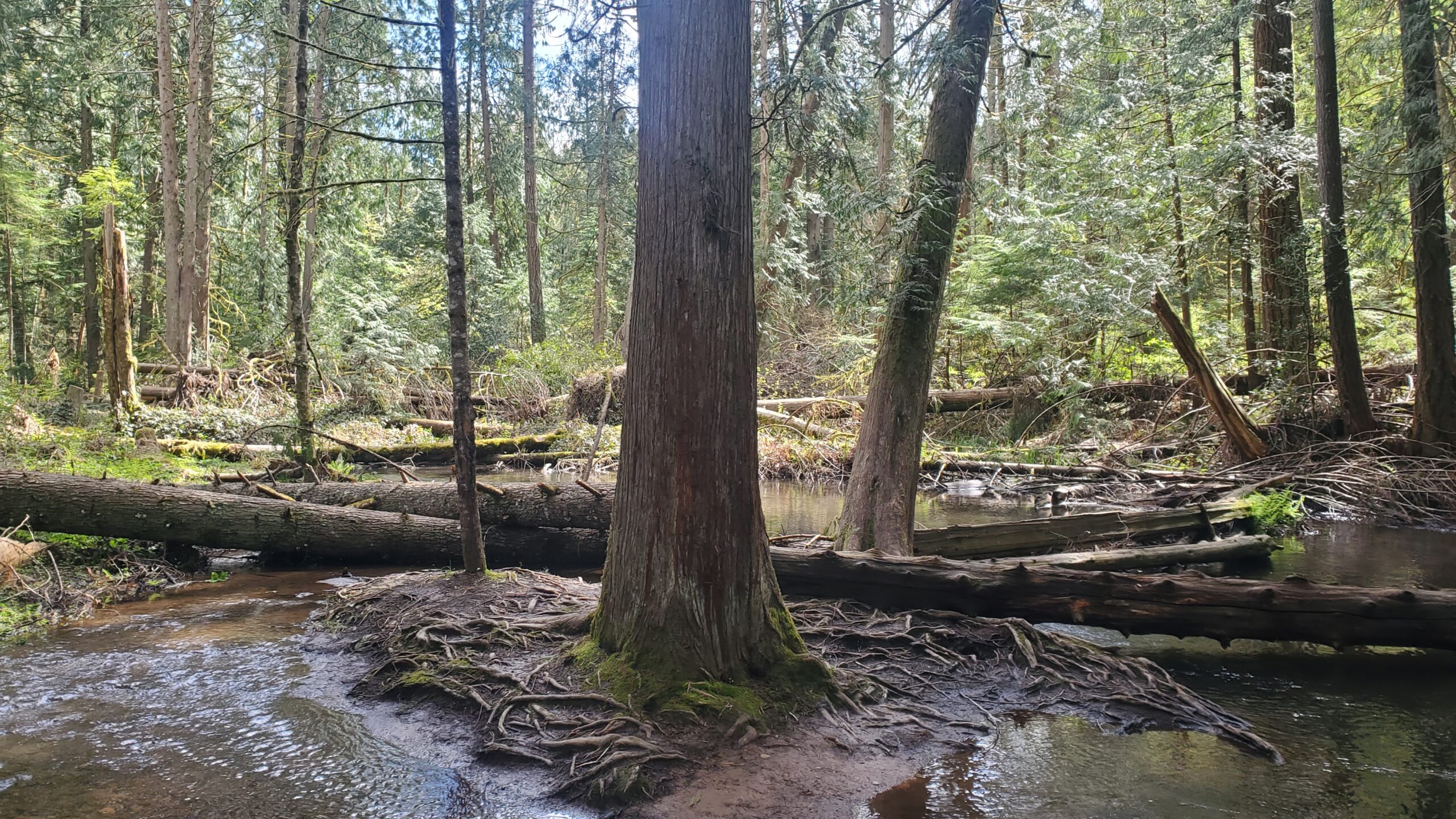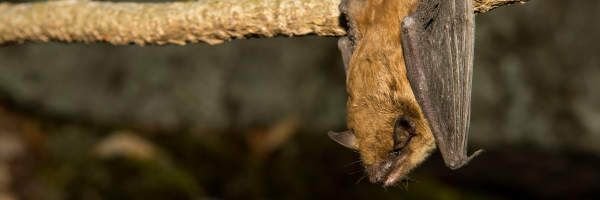Bonnie Lure State Park, Estacada
CRBC kicked off the summer with a major restoration project at Bonnie Lure State Park near Estacada. With support from Columbia Helicopters, Inter-Fluve and Aquatic Contracting, we staged over 150 logs to build logjams on Eagle Creek’s side channels to improve habitat conditions for coho salmon, spring and fall Chinook salmon and pacific lamprey.
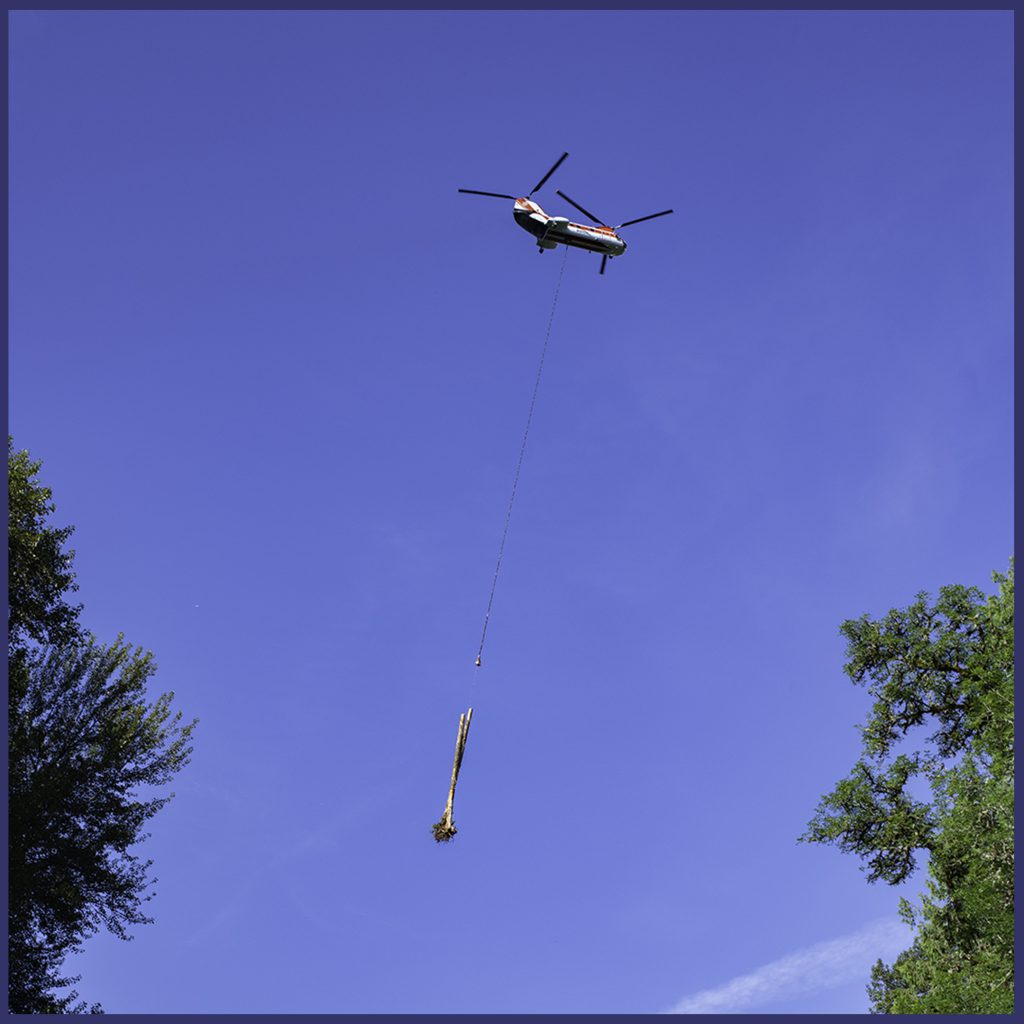
Logjams may appear to be obstacles for fish but they actually form vital habitat. Logjams redirect the flow of waterways, providing juvenile salmonids with pools and root structures where they can seek cover from predators. Logjams also collect sediments, creating gravelly areas for spawning salmonids to make their redds.
“We’re trying to work within the context of this dynamic channel, allowing it to migrate back and forth but setting it up so that, wherever it does move to it has that structure, those bones of the large wood, to scour those pools and create those riffles,” CRBC Restoration Program Manager Liz Gilliam said. “And so we’re trying to engineer these specific log jams to go in, knowing that the channel is going to shift and change over time and hoping that we can accommodate that shift and change.”
Historically, Eagle Creek would have had lots of fallen wood, but years of logging, fire suppression and improper land management has removed too much of the riparian biomass to ensure juvenile salmonids and lamprey can find the habitat they need. That’s why we’re working with a grant from the Oregon Watershed Enhancement Board to put logs back in the system, making 3,500 linear feet of side channel habitat a better home for Clackamas River salmon.
Construction began on June 26 with Columbia Helicopters dropping the logs near their installation sites. Inter-Fluve and Aquatic Contracting wrapped up their work on August 6, placing the logs in the creek and pulling down additional trees in the riparian zone to build the logjam structures. To polish off the project, they will return in the Fall to plant willows along the bank to provide shade.
“The changes will be drastic from the fishes’ view but really minor for people using the park,” Liz said. “There’ll still be a trail system and fishing opportunities, but just a little more wooded habitat in the system – and hopefully more fish!”
This project is funded by grants from OWEB and Portland General Electric.

